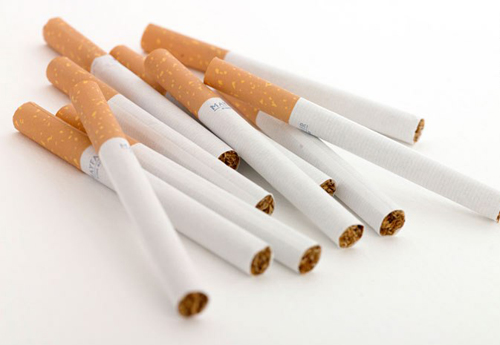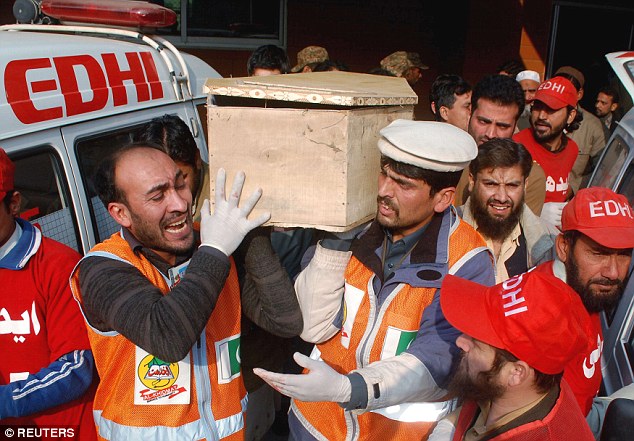On almost every brand of cigarette pack, it is clearly printed the sentence “Smoking causes mouth cancer – Ministry of Health” but a lot of educated people who can read the same and are still smoking which is quite amazing. Smoking harms every organ of the body and is a major health problem of a lot of people.

Almost 55% of Pakistani households have at least one smoker and 1200 Pakistani children between ages 6 and 15 begin smoking every day. About 5000 people in Pakistan are admitted to hospitals everyday due to tobacco related diseases from which 274 die daily and above 0.1 million die every year due to smoking. The worldwide deaths caused by smoking are above 5 million every year. These deaths occur as a result of cancer of lung, mouth, throat, kidney, bladder, pancreas, stomach and cervix, strokes and heart attacks etc.
Cigarette smoke contains a lot of chemical agents, many of which are known to be toxic.
o Acetone – widely used as a solvent, for example in nail polish remover
o Ammonia – found in cleaning fluids
o Arsenic – a deadly poison used in insecticides
o Formaldehyde – used to preserve dead bodies
o Cadmium – a highly poisonous metal used in batteries
o Shellac – becomes a wood varnish when mixed with a form of alcohol
o Benzene – used as a solvent in fuel and chemical production
o Cyanide – a deadly poison
In addition to the above, nicotine is an addictive ingredient in the cigarette smoke. Nicotine is rapidly absorbed into the blood within 30 seconds of entering the smoke into the body which reaches to the brain. It allows the brain to discharge special chemicals that make feeling pleasure and vitality. One of these chemicals is called Adrenaline. This feeling is commonly called as a “Thrill”. Within 30 minutes, the “Thrill” fades away and the smoker is gone feeling depressed and exhausted. This feeling insisted the smokers to light up the next cigarette.
The cycle of excitement and depression keeps repeating which leads to addiction. Since the body is able to build up a high tolerance to nicotine, smokers steadily smoke more and more in order to get the same “Thrill”. It has been proven that the addiction for nicotine increases as levels of emotional and physical stress increase. Therefore, feeling tense can lead to more smoking. When a person decides to quit smoking, the addiction for nicotine prevents the person to not to stop smoking due to some symptoms which include short-temper, irritation, anger and adverse feelings etc. In addition to nicotine, cigarettes smoke also contains carbon mono-oxide, also known as CO.

This gas is that which kills people who commit suicide by starting their car engine and closing the garage gate. By taking carbon mono-oxide through smoking increases the risk of developing heart diseases. Tar is also an active ingredient in the cigarette smoke which can damage the lungs. When a person smokes, it not only affects the smoker but also the people who are in the surroundings. When a person is smoking breathes the smoke that is exhausted from the smoker, as well as the smoke that comes from the cigarette, the people around him is also inhale the smoke. This is known as passive smoking.
Men, women and children are all affected by the smoke related health problems that have already been mentioned above. However, there are some additional health risks which are specific to women and children. Women smokers who take birth control pills have an increased risk of stroke, narrowing of blood vessels and thrombosis. It is more difficult for women smokers to conceive a pregnancy than non-smoking women. Women smokers who do get pregnant are at a higher risk of having the premature baby or low birth weight baby. Furthermore, children who are exposed to smoke on a regular basis are truly the innocent victims of smoking and at a higher risk of sudden infant death syndrome (SIDS), bronchitis, pneumonia and asthma etc.
The unborn children of smoking mothers are more likely to suffer from behavior disorders. Moreover, there are also some specific health risks of smoking for men. Smoking can lower sperm-count and could lead to fertility problems. Cigarette Quitting is not so easy. You may have short-term effects such as weight gain, irritability, and anxiety. Some people try several times before they succeed. Also, the physicians now realize that smoking cigarettes is an addiction and it needs to be treated as other diseases. There are many ways to quit smoking. Some people stop “cold turkey” which describes the actions of a person who abruptly gives up a habit or addiction rather than gradually easing the process through gradual reduction or by using replacement medication. Others benefit from step-by-step manuals, counseling, medicines or products that help reduce nicotine addiction.
There are a number of institutes, rehab centers and hospital available to help smokers to kick this habit. When a patient quits smoking, the body tends to recover and repair some of the damages caused by smoking. For example, within 3 months of quitting, lung function improves by about 30%. After one year, the risk of heart attack is half what it would have been if the patient had continued to smoke. After ten years, the death rate from lung cancer is nearly cut in half and the risk of strokes becomes similar to that of non-smokers. It is therefore never too late to quit smoking. The best way to prevent all of the problems caused by smoking is “Don’t Start Smoking”. Therefore, it is very important that adults do not encourage children to smoke. It is equally as important to support smokers who are trying to quit and discourage the people who rarely smoke just for fun.
Prohibition of Smoking and Protection of Non- Smokers Health Ordinance, 2002″ and Rules made under this Law:

Government of Pakistan has declared all public places as completely smoke free. (Section 5 & SRO 51 (KE)/2009) No “Designated Smoking Areas” are allowed in places of public work or use. (S.R.O 51 (KE)/2009) Place of public work or use includes auditoriums, buildings, health institutions, amusement centers, restaurants, public offices, Court buildings, cinema halls, conference or seminar halls, eating houses, hotel lounges, other waiting lounges, libraries, bus stations or stands, sports stadiums, educational institutions, libraries and the like which are visited by general public but does not include any open place. –
Section 2(c) Federal Government is authorized to declare place of public work or use to be a no-smoking and no-tobacco use place. (Section 3) There will be no smoking or use of tobacco in any other form in public service vehicles. (Section 6) Free goods, free samples or cash rebates to generate sales and promote smoking are illegal. (SRO 53(KE)/2009) There is prohibition to advertise tobacco and tobacco products by any person or company on any media or in any place and any public service vehicle if this advertisement is not in accordance with guidelines prescribed by the government. (Section 7) No sale of cigarette or any other smoking substance to any person is allowed who is below the age of eighteen years.
(Section 8) There is prohibition of sale or distribution of cigarette or any other smoking substance or any other tobacco product within 50 meters from any college, school or educational institution. (Section 9) Section 10 makes the owner / manager / incharge of every place of public work or use responsible to display and exhibit a board at conspicuous place in and outside the premises visited or used by the general public prominently stating that the place is a “NO SMOKING ZONE” and that “SMOKING IS AN OFFENCE”.
Penalties (Section 11)
On violation of Section 5, 6 & 10
First offence – Fine up to Rs.l000
Subsequently – Fine not less than Rs. l 000 and up to Rs.l00,000.
On violation of Section 7, 8 & 9
First offence – Fine up to Rs. 5,000
Subsequently – Fine not less than Rs. l00,000 or imprisonment up to three months or both.

Section 12 empowers any authorized officer or a police officer (sub-inspector or above) to eject any person from any place of public work or use who contravenes the provisions of this Ordinance. Magistrate of first class is to take cognizance of any offence under this Ordinance on a complaint in writing by an authorized officer with respect to an offence under section 5, 6 and 10 and on a report in writing by a police officer, not below the rank of sub-inspector, with respect to an offence under section 7, 8 and 9. (Section 13) In Section 2(b), Authorized Officer = Authorized Person: Authorized persons, listed below, are authorized by law to ‘eject’ persons who violate the law and file a complaint in writing before a magistrate of the first class. However, please note that in certain cases, there are limits set on the places with regard to which authorized persons are allowed to take these two actions.
Section 4 and S.R.O. 654 (1)/2003
The Federal Government is pleased to authorize and declare the following persons to be competent to act under the provisions of this Ordinance: Members Parliament and Provincial Assemblies in respect of sections 5, 6, 10, 12 and 13; District, Tehsil and Union Council Nazims and Deputy Nazims and councilors in respect of sections 5, 6, 10, 12 and 13; All officers in BPS-20 and above, in the places under their jurisdiction in respect of sections 5, 6, 10, 12 and 13; All Police Officers of the rank of Sub-Inspector and above in respect of sections 5, 6, 7, 8, 9, 10, 12 and 13; Heads of the educational institutions, in respect of the school or the institution in respect of sections 5, 9, 10, 12 and 13;
Public transport, bus and wagon drivers and conductors, in respect of the violators in the vessel in respect of Sections 6,12 and 13; Train driver and conductor guards, in respect of the train in respect of sections 6, 12 and 13; Managers of airport lounges, waiting rooms, at railway stations and bus stops in respect of sections 5, 10,12 and 13; All crew members aboard an aeroplane in respect of sections 5, 6, 12 and 13; Managers of establishments, where services are provided to the public in respect of sections 5, 10, 12 and 13; Heads of hospital and other health care establishments in respect of sections 5, 10, 12 and 13;
Author: Rana Naveed ur Rehman











